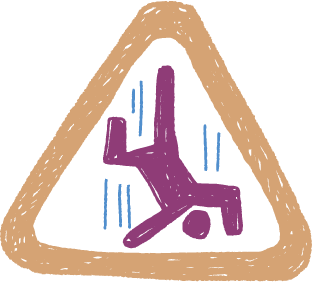 I’ve spent time during the past year or so going up to my colleagues and asking, “What percentage of our patients do you think will be sober/clean in a year?” I varied my delivery; sometimes I used “sober,” sometimes, “clean.” At times I said “alcoholics,” other times I said “addicts.”
I’ve spent time during the past year or so going up to my colleagues and asking, “What percentage of our patients do you think will be sober/clean in a year?” I varied my delivery; sometimes I used “sober,” sometimes, “clean.” At times I said “alcoholics,” other times I said “addicts.”
It was clearly an informal survey. The question was presented to people whom I work with as well as friends and colleagues working at other treatment centers. I wasn’t entirely surprised when I got responses like “50%” and “10%.” It became clear to me that a lot of the professionals whom I work with on a daily basis seem to believe that treatment for substance use disorders (SUDs) is not very effective.
 I began to ask the question because I was growing tired of friends and neighbors asking me questions clearly conveying their impression that treating SUDs is a waste of time. It’s hard to blame them.
I began to ask the question because I was growing tired of friends and neighbors asking me questions clearly conveying their impression that treating SUDs is a waste of time. It’s hard to blame them.
My local newspaper and television stations are constantly reporting about scams in our industry. Celebrities get a lot of coverage when they hit bottom or start using again. Success stories do not get that kind of attention. Those of us who have established long term recovery are often silent.
Changing cultural beliefs may take some time. To some extent we’re powerless over them. However, there are some things that we can control. Why do many professionals treating SUDs have the perception that treatment has such a limited impact? There is clearly strong evidence that treatment is very effective when a plan for recovery is followed.
Studies have demonstrated that 77% to 90% of patients who comply with their treatment plans and are regularly monitored remain abstinent for periods of one-to-five years (1, 3) (2, 7).
Why do people who work as addiction professionals not know that?
Why is this not regularly conveyed to patients in treatment? It’s a motivator.
The effectiveness of treatment for SUDs when patients follow an extended care plan is gratifying.
However, as a profession, we come face to face with another problem. A lot of patients do not follow an extended care plan become unstable during their first year into recovery. A frequently cited study published in 2000 (4) indicates that between 40% and 60% of patients who have completed residential care for a SUD(s) become unstable during their first year in recovery (see Chart below). That’s not good.
(NOTE: Motivating patients to follow an extended care treatment plan is a topic that needs to be pursued in another article. It doesn’t make sense to develop plans that we know patients will not follow.)
 However, patients with chronic diseases such as asthma, type II diabetes, and hypertension become unstable at a similar rate.
However, patients with chronic diseases such as asthma, type II diabetes, and hypertension become unstable at a similar rate.
So how come people, generally speaking, do not have a similarly glum expectation when it comes to the effectiveness of treatment for those chronic diseases?
One possibility is that it is generally recognized that patients being treated for other chronic diseases will always be in treatment. Their treatment plans are for a lifetime. Professionals and non-professionals alike accept that diabetics will always have difficulty keeping their blood sugar stable, asthmatics will always have respiratory problems, and that the blood pressure of patients with hypertension will occasionally become elevated.
Diseases treated with an acute care model are curable. Patients and the public expect a cure.
Treatment cannot be perceived as unsuccessful for patients with other chronic diseases because they are still in treatment. People with SUDs are perceived to have completed treatment. It’s over! SUD(s) was treated as an acute occurrence. Diabetics will always be in treatment: so will people with hypertension and asthma. People with SUD(s) are done.
I think that most addiction professionals believe that we treat a chronic disease. Personally, I have only recently realized that we’ve been using an acute care mode. I wish that I could say that it was my discovery. It wasn’t. People such as William White (9) have been making this point for some time. Change never comes easily or quickly. If we want to evolve toward treating SUD(s) as a chronic disease there are ways to begin (8).
 As we move toward a chronic care model we want to measure the effectiveness of what we do in a manner similar to measuring the impact of protocols for other chronic diseases (5). The ways that we have been measuring treatment effectiveness is about as insane as the disease we treat.
As we move toward a chronic care model we want to measure the effectiveness of what we do in a manner similar to measuring the impact of protocols for other chronic diseases (5). The ways that we have been measuring treatment effectiveness is about as insane as the disease we treat.
Traditionally we have used total abstinence as a measure of treatment effectiveness. So if a patient completes residential care, has a weekend reoccurrence a few months down the road but soon returns to abstinence, we have not necessarily considered that person to be a success. The measure of treatment effectiveness that we have chosen is perfection. Maybe we should measure “sustained action” in the direction of consistent pursuit of abstinence (6). A patient who remains in treatment, at any level of care, is never unsuccessful.
What would the success rate be for diabetes if the only measure of treatment effectiveness was perfectly stable blood sugar levels?
I have, for the purposes of this article, accepted the equivalency of “treatment” and “residential” care. I have to stop doing that. If we are treating a chronic disease we need a continuum in which all levels of care are equally important.
 I have used words like “stable” and “unstable” as well as “re-occurrence” because I believe that we would benefit from using terminology similar to that used when treating chronic diseases.
I have used words like “stable” and “unstable” as well as “re-occurrence” because I believe that we would benefit from using terminology similar to that used when treating chronic diseases.
Certainly this is not the only article arguing for a chronic care model and the need to change how we measure the effectiveness of treatment. It may be one of the few saying that we need to take responsibility for how we are perceived.
Has anyone ever seen professionals who treat other chronic diseases work as hard as we do to convince ourselves and the public that “Treatment Works?” I look forward to the day that we don’t have to either.




Leave a Reply
You must be logged in to post a comment.